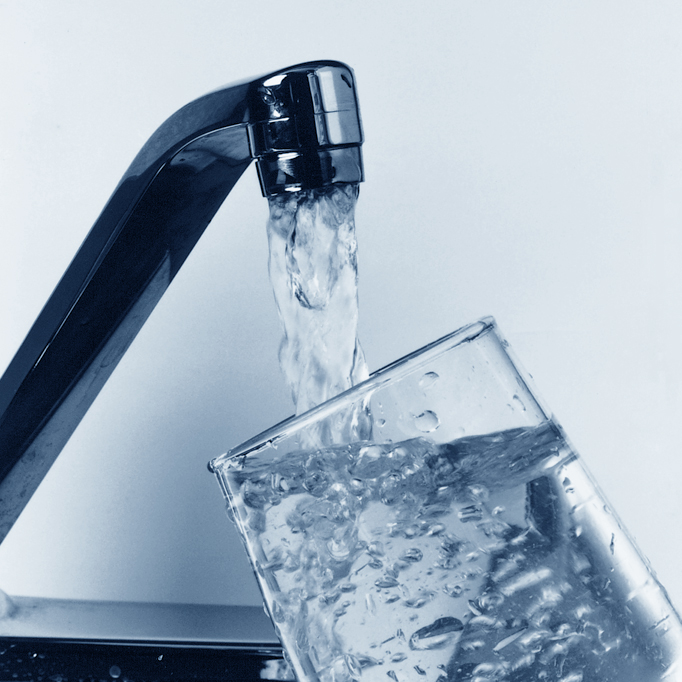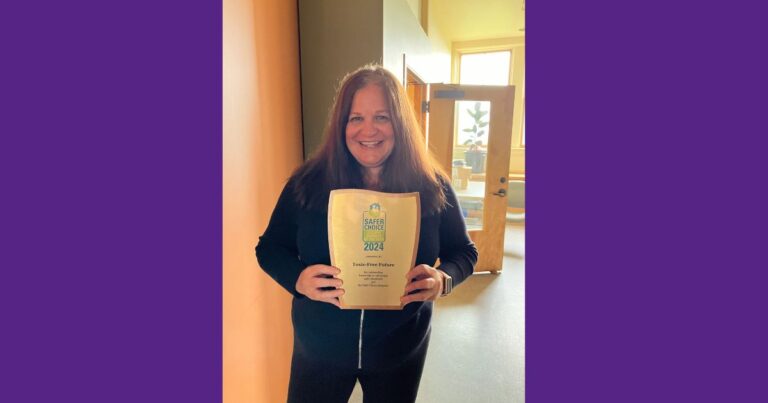Communities across the U.S. are suffering from drinking water contamination from poly- and perfluoroalkyl (PFAS) chemicals due to industrial releases and use in firefighting foam. Found in a wide range of products, from food packaging to stain-resistant furniture, human exposure comes from multiple sources and routes. With their remarkable persistence and mobility—these chemicals are not known to break down in the environment and move through soil to drinking water—PFAS have become global pollutants that threaten the health of people and wildlife.
Tomorrow morning, the EPA will release its first federal PFAS management plan. We haven’t seen the plan yet and will report back when we do, but here’s what EPA and other federal agencies should do.
Find out where PFAS contamination is coming from and where these chemicals are in use.
- Adding PFAS chemicals to the Toxic Release Inventory would disclose who is releasing them into our air and water. Polluters should also be required to tell neighboring communities.
- Requiring water systems and regulators to monitor for PFAS in drinking water, air, and food, and improving the tools to measure contamination, would tell us the extent of the PFAS contamination crisis. Agencies like EPA and CDC should also conduct body burden testing, medical monitoring, and health impact studies of people impacted by PFAS contamination, especially military families.
Turn off the tap on these dangerous pollutants:
- Stop approving new PFAS chemicals. An estimated 5,000 PFAS chemicals are in use, so there’s no reason for the EPA or Food and Drug Administration to let any more PFAS chemicals on the market. EPA should also finalize a rule that would require companies to get EPA approval before using some kinds of PFAS chemicals.
- Stop adding more PFAS chemicals to the environment. PFAS should be banned from consumer products, including cookware, food packaging, cosmetics, and textiles including carpeting and clothing. PFAS chemicals should also be banned from firefighting foam, especially foam used at civilian airports and in training exercises. EPA should also regulate the discharge of toxic PFAS chemicals into our air and water.
Clean up existing PFAS pollution and hold polluters accountable:
- Add PFAS to the Clean Water and Superfund cleanup laws. Classifying PFAS as a hazardous substance under the Clean Water Act and Superfund will help communities begin to clean up contaminated sites. EPA should make sure PFAS chemicals are properly disposed of.
- Set an enforceable limit for PFAS in tap water. More than 1,500 drinking water systems serving more than 110 million Americans may be contaminated with PFAS chemicals. Setting a legal limit, known as a Maximum Contaminant Level (MCL), for the class of chemicals will require utilities to treat tap water to remove or lower PFAS contamination. States should also set their own legal limits. Since the EPA has not begun the process to establish an MCL, state action is especially important.
- Direct the military to quickly clean up contaminated bases. Pentagon data shows that at least 36 military installations have on-base drinking water contamination that exceeds the EPA’s health advisory for the PFAS chemicals formerly used to make DuPont’s Teflon and 3M’s Scotchgard. The Department of Defense has identified 401 military installations with known or potential contamination.
- Make polluters pay their fair share. Many of the companies who manufactured or used PFAS understood the risks to human health but failed to protect workers or nearby residents. Adding PFAS to Superfund will ensure that polluters pay. Polluters should also be responsible for taking back and safely disposing of their PFAS products, like firefighting foams. But other measures, such as a clean-up trust fund, should be created, and Americans impacted by PFAS pollution should be allowed to take action through the courts.
In the absence of federal action, states are taking the lead to protect communities:
The good news is that states are not waiting for the EPA to make PFAS a priority. At least 14 states will consider bills to address PFAS this year, ranging from bills to require more PFAS disclosure to bans on PFAS in food packaging and firefighting foam.
- Banning PFAS in food packaging: At least 8 states will consider policy to eliminate or reduce PFASs in food packaging. States considering bans include: CT, MA, ME, MN, NJ, NY, RI, VT.
- Banning PFAS in firefighting foam: At least 9 states will consider policy to ban the use of PFAS in firefighting foam. Washington State passed a ban on PFAS in foam last year and the Federal Aviation Administration has been directed to rewrite regulations to allow for PFAS-free foams at airports. States considering bans are AK, CT, MI, MN, NH, NY, RI, VA, VT.
- Addressing PFAS in drinking water: Beyond regulating PFAS in firefighting foam, at least 7 states will consider policy to limit levels of PFAS in drinking water, as well as fund cleanup of contaminated drinking water, including medical monitoring and testing. States considering actions include AK, MI, NH, NJ, NY, VT, WA.
To learn more, visit http://www.saferstates.com/news/2019map/
Congress is taking action:
Some members of Congress have introduced or are considering bills to expand PFAS monitoring, to ban some PFAS uses, and to set tough clean up standards, among other priorities. Last year, Congress passed legislation to study PFAS health effects and to allow civilian airports to use PFAS-free firefighting foam. Bipartisan bills to monitor PFAS in drinking water sources and accelerate PFAS clean-up at military bases were introduced in the last Congress and a bill to designate PFAS a hazardous substance under Superfund already has been reintroduced in this Congress.





